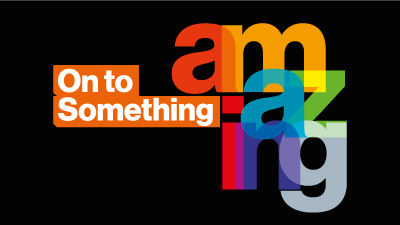Kahwaji, Ghalib Y., et al. "Optimization of High-Capacity Ground-Coupled Heat Exchanger under Hot-Wet Climate Condition: Numerical Approach." Proceedings of the Proceedings of the 6th International Conference on Energy Harvesting, Storage, and Transfer (EHST'22). Ed. Dr. Boguslaw Kruczek. Niagara Falls, Canada: n.p., 2022. Web.
Kahwaji, Ghalib Y., et al. "Maximizing Performance of Ground-Coupled Heat Exchanger under Hot-Wet Climate Condition: Experimental and Numerical Analysis." Proceedings of the Proceedings of the 6th International Conference on Energy Harvesting, Storage, and Transfer (EHST'22). Ed. Dr. Boguslaw Kruczek. Niagara Falls, Canada: n.p., 2022. Web.
Samaha, Mohamed A, et al. "Thin Film Flow Along Partially Immersed Rotating Cylinder." Proceedings of the 73rd Annual Meeting of the APS Division of Fluid Dynamics. Ed. American Physical Society. Chicago, IL: American Physical Society, 2020. Web.
Samaha, Mohamed A., et al. "Influence of Shroud − Chimney Configuration on Heat Transfer from Horizontal Cylinder: Experimental and Numerical Investigation." Proceedings of the 72nd Annual Meeting of the APS Division of Fluid Dynamics. Ed. Michael Thoennessen. Seattle, WA: American Physical Society, 2019. Web.
Al-Kahla, Ibrahim, Ghalib Y. Kahwaji, and Mohamed A. Samaha. "Numerical investigation of high capacity ground-coupled heat exchanger performance for water cooled chillers services." Proceedings of the 71st Annual Meeting of the APS Division of Fluid Dynamics Volume 63, Number 13. Ed. Michael Thoennessen. Atlanta, GA: American Physical Society, 2018. Web.
Samaha, Mohamed A., et al. "Passive natural convection augmentation from horizontal cylinder using a novel shroud-chimney configuration: Experimental approach." Proceedings of the International Colloquium on Advanced Convergence Engineering 2018, October 11-12, Korea Maritime and Ocean University. Ed. Young-Ho LEE. BUSAN, South Korea: n.p., 2018. Web.
Samaha, Mohamed A. and Ghalib Y. Kahwaji. "Passively Enhancing Convection Heat Transfer Around Cylinder Using Shrouds." Proceedings of the 70th Annual Meeting of the American Physical Society Division of Fluid Dynamics, November 19 — 21, 2017, Denver, Colorado, USA. Ed. Michael Thoennessen. Denver, CO: American Physical Society, 2017. Web.
Kahwaji, Ghalib Y., Mohamed A. Samaha, and Hassan M. S. Al Sarrach. "Modeling of the coupled conduction-convection ice formation on a horizontal finned tube under density inversion conditions." Proceedings of the Global Summit and Expo on Fluid Dynamics & Aerodynamics. Ed. Chuan Chiang Chen, Sofia D Panteliou, and Ahmed Hassanein. London, United Kingdom: n.p., 2016. Web.
Samaha, Mohamed A., et al. "Measurements of Drag Reduction by SLIPS." Proceedings of the 67th Annual Meeting of the APS Division of Fluid Dynamics, November 23-25, 2014, San Francisco, CA. Ed. Sanjiva K. Lele. San Francisco, CA: n.p., 2014. Web.
Fu, Matthew, et al. "Liquid Infused Surfaces in Turbulent Channel Flow." Proceedings of the 67th Annual Meeting of the APS Division of Fluid Dynamics, November 23-25, 2014, San Francisco, CA. Ed. Sanjiva K. Lele. San Francisco, CA: n.p., 2014. Web.
Rosenberg, Brian, et al. "Longevity and drag reduction of omniphobic surfaces." Proceedings of the 66th Annual Meeting of the APS Division of Fluid Dynamics Volume 58, Number 18. Ed. Michael Thoennessen. Pittsburgh, PA: American Physical Society, 2013. Web.
Samaha, Mohamed A. and Marcus Hultmark. "Pittsburgh." Proceedings of the 66th Annual Meeting of the APS Division of Fluid Dynamics Volume 58, Number 18. Ed. Michael Thoennessen. Pittsburgh, PA: n.p., 2013. Web.
Hultmark, Marcus, et al. "Drag reduction using slippery liquid infused surfaces." Proceedings of the 66th Annual Meeting of the APS Division of Fluid Dynamics Volume 58, Number 18. Ed. Michael Thoennessen. Pittsburgh, PA: n.p., 2013. Web.
Barth, Christina A., et al. "Convective Air Mass Transfer in Submerged Superhydrophobic Surfaces." Proceedings of the 65th Annual Meeting of the APS Division of Fluid Dynamics, Volume 57, Number 17. Ed. Michael Thoennessen. San Diego, CA: American Physical Society, 2012. Web.
Tafreshi, Hooman Vahedi, Mohamed A. Samaha, and Mohamed Gad-el-Hak. "Sustainability of Superhydrophobicity Under Pressure." Proceedings of the 65th Annual Meeting of the APS Division of Fluid Dynamics, Volume 57, Number 17. Ed. Michael Thoennessen. San Diego, CA: American Physical Society, 2012. Web.
Tepper, Gary C., et al. "Novel Method to Characterize Superhydrophobic Coatings." Proceedings of the 65th Annual Meeting of the APS Division of Fluid Dynamics, Volume 57, Number 17. Ed. Michael Thoennessen. San Diego, CA: American Physical Society, 2012. Web.
Gad-el-Hak, Mohamed, Hooman Vahedi Tafreshi, and Mohamed A Samaha. "Effects of Hydrostatic Pressure on the Drag Reduction of Submerged Aerogel-Particle Coatings." Proceedings of the 65th Annual Meeting of the APS Division of Fluid Dynamics, Volume 57, Number 17. Ed. Michael Thoennessen. San Diego, CA: American Physical Society, 2012. Web.
Samaha, Mohamed A., Hooman Vahedi Tafreshi, and Mohamed Gad-el-Hak. "Influence of Flow on Longevity of Superhydrophobic Coatings." Proceedings of the 65th Annual Meeting of the APS Division of Fluid Dynamics, Volume 57, Number 17. Ed. Michael Thoennessen. San Diego, CA: American Physical Society, 2012. Web.
Samaha, Mohamed A. and Mohamed Gad-el-Hak. "Fabrication and Characterization of Low-Cost Superhydrophobic Coatings." Proceedings of the 41st AIAA Fluid Dynamics Conference and Exhibit. Ed. American Institute of Aeronautics and Astronautics. Honolulu, HI: American Institute of Aeronautics and Astronautics, 2011. Web.
Gad-el-Hak, Mohamed, et al. "Fabrication of Superhydrophobic Fiber Coatings by DC-Biased AC-Electrospinning." Proceedings of the 64th Annual Meeting of the APS Division of Fluid Dynamics, Volume 56, Number 18. Ed. Michael Thoennessen. Baltimore, MD: American Physical Society, 2011. Web.
Samaha, Mohamed A., Hooman Vahedi Tafreshi, and Mohamed Gad-el-Hak. "Modeling superhydrophobic surfaces comprised of random roughness." Proceedings of the 64th Annual Meeting of the APS Division of Fluid Dynamics, Volume 56, Number 18. Ed. Michael Thoennessen. Baltimore, MD: American Physical Society, 2011. Web.
Tepper, Gary C., et al. "In situ, noninvasive characterization of superhydrophobic coatings." Proceedings of the 64th Annual Meeting of the APS Division of Fluid Dynamics, Volume 56, Number 18. Ed. Michael Thoennessen. Baltimore, MD: American Physical Society, 2011. Web.
Ochanda, Fredrick O, et al. "Salinity Effects on Superhydrophobic Coatings." Proceedings of the 64th Annual Meeting of the APS Division of Fluid Dynamics, Volume 56, Number 18. Ed. Michael Thoennessen. Baltimore, MD: American Physical Society, 2011. Web.
![Nastaran Nagshineh is shown with other faculty in a small room where she defended her thesis.]()









